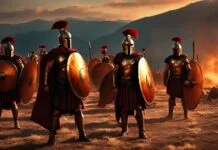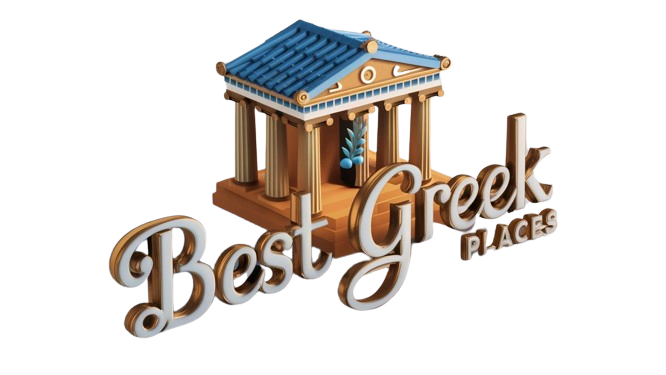The Middle Byzantine Period: A Glorious Era of Byzantine Emperors
Introduction to the Middle Byzantine Era
The Middle Byzantine period, spanning from the 7th to the 12th centuries, marked a dynamic chapter in the history of the Byzantine Empire. This era witnessed significant political, cultural, and military transformations, as a succession of remarkable emperors guided the empire through both trials and triumphs. Understanding the intricacies of these developments shines a light on the enduring legacy of the Byzantine Empire.
The Rise from Adversity
The Middle Byzantine era emerged from the aftermath of the Byzantine Empire’s struggles during the early medieval period. Following the challenges posed by Arab invasions and internal strife, the empire focused on consolidating its power while reclaiming territories and restoring stability. This resurgence was largely driven by the visionary leadership of its emperors, who played a pivotal role in the empire’s recovery.
Noteworthy Emperors of the Time
Several emperors stand out during this significant period, each contributing uniquely to the empire’s evolution. Figures like Emperor Justin II, Emperor Heraclius, and Emperor Basil II became synonymous with strength, vision, and resilience. Their reigns not only emphasized military victories but also cultural and economic advancements.
Military Prowess and Strategic Innovations
Military strategy was paramount in the Middle Byzantine period. Emperors employed innovative techniques and strategies, adapting to the shifting landscape of war. The establishment of thematic armies and the use of Greek fire showcased the empire’s commitment to safeguarding its borders and projecting power.
Cultural Flourishing Amidst Turmoil
While military conquests and defenses were crucial, the Middle Byzantine period was also a time of rich cultural development. The emperors patronized the arts and literature, leading to a renaissance-like blooming of Byzantine culture. This period saw the creation of stunning mosaics, intricate iconography, and theological discourse that laid the groundwork for future generations.
Religious Influence on Governance
Religion played a significant role in shaping the policies and governance of the Middle Byzantine emperors. The relationship between the church and state was intricate, as emperors identified themselves as divine representatives. This fusion of church and political power helped to unify the populace and legitimize the emperors’ authority.
Landscape of Architecture
The architectural advancements during the Middle Byzantine period were extraordinary. Emperors commissioned magnificent churches and public works that reflected their reverence for faith and civic pride. Structures like the Church of the Holy Sepulchre and the Hagia Sophia exemplified the grandeur representative of this era.
The Byzantine Economy: A Flourishing Trade Hub
Economically, the Middle Byzantine Empire thrived as it established itself as a central trade hub connecting the East and West. The emperors implemented policies that promoted commerce and flourished market exchanges, solidifying Byzantium’s position as a pivotal player in international trade routes.
The Byzantine Influence on Law and Society
The legal foundations laid down during this period had lasting impacts on society. Emperors pursued legal reforms that sought to democratize the legal system and ensure justice. This era saw extensive codifications of laws that contributed to societal stability and governance.
Educational Advancements and Intellectual Growth
Education flourished under the Middle Byzantine emperors, reflecting the empire’s commitment to fostering intellectual growth. Universities and schools were established, leading to advancements in philosophy, science, and theology. This focus on education helped elevate the cultural status of the empire.
Rebellion and Resistance
However, not all was harmonious in the empire. Internal dissent and challenges emerged as various factions vied for power. The emperors had to navigate these turbulent waters, often quelling rebellions and uprisings. Their ability to maintain control was critical to the stability of the empire.
Clashes with External Forces
The Middle Byzantine emperors faced constant threats from external forces, including various emerging powers and incursions from diverse groups. Engagements with the Seljuk Turks and the Hungarians respectively tested the military prowess of emperors, leading to both victories and defeats that shaped territorial boundaries.
A Complex Legacy
The legacy of the Middle Byzantine emperors is complex yet profound. Each ruler contributed significantly to the empire’s rich tapestry, leaving marks that could be seen in governance, culture, and theology. Their combined efforts forged an empire that adapted and endured in the face of immense change.
Conclusion: Emperors Who Shaped Byzantium
The Middle Byzantine period stands as a testament to the resilience and ingenuity of its emperors. Through military innovations, cultural advancements, and strong governance, they navigated a world of constant challenge and uncertainty. Understanding the reigns of these rulers provides invaluable insights into the lasting influence of the Byzantine Empire on subsequent civilizations, echoing through the annals of history. Their collective story is an inspiring narrative of leadership, faith, and ambition, embodying the essence of an era that continues to captivate historians to this day.





















